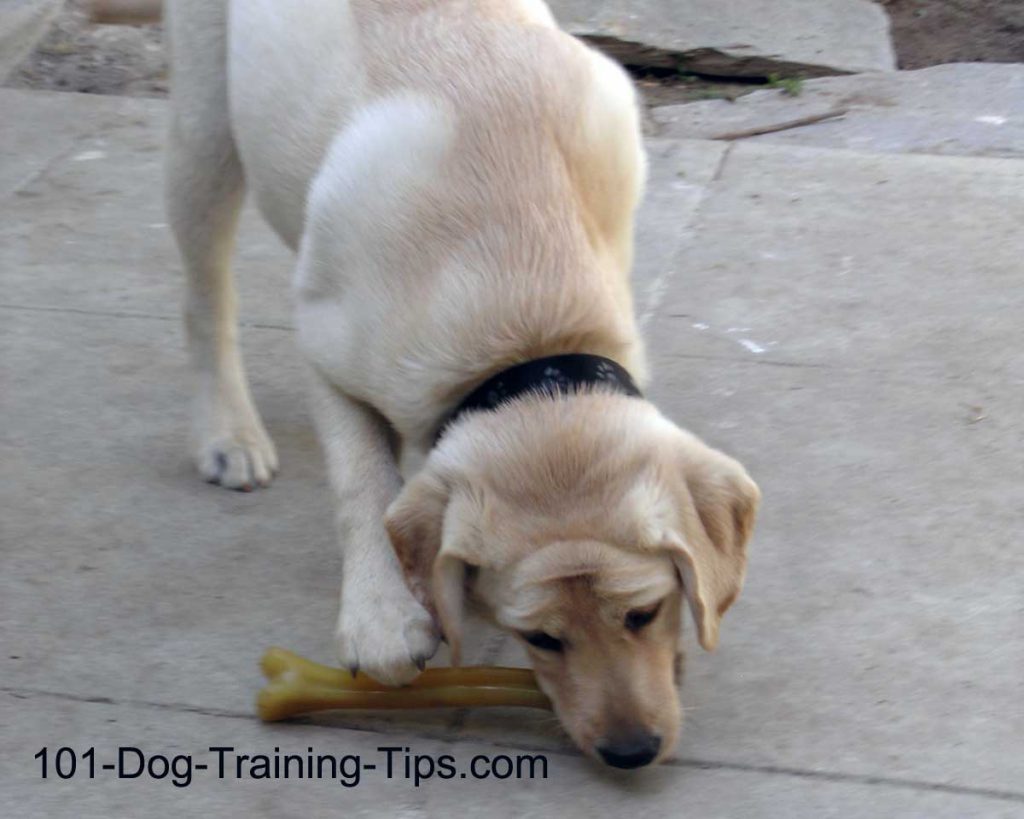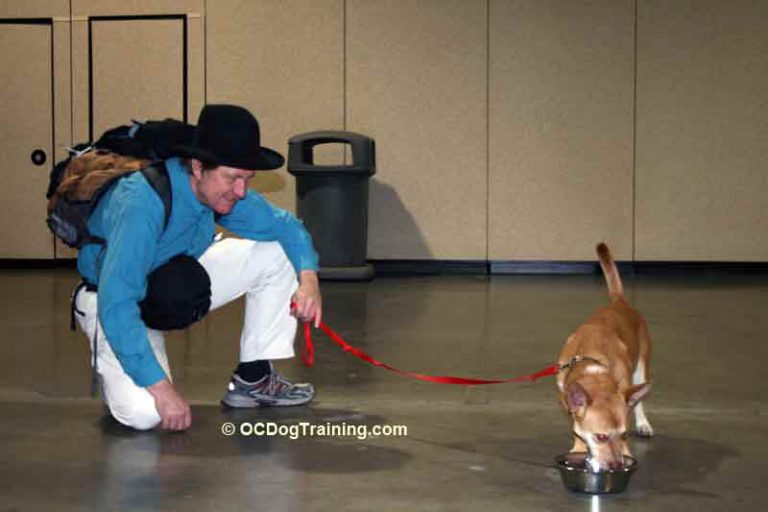Managing dog behavior and people’s too
Encourage good dog behavior with the appropriate discriminative stimuli.
Is managing discriminative stimuli part of philosophy, business management, or dog training? This is what Wikipedia has to say about “Stimulus control and discriminative stimuli: Stimulus control is the phenomenon of a stimulus increasing the probability of a behavior (operant response) because of a history of that behavior being differentially reinforced in the presence of the stimulus. In other words, stimulus control is basically learning to pay attention to things that we identify in the environment (discriminative stimuli) that give us information about the effectiveness of our behavior.” Discriminative stimuli help us determine what rules apply to achieve reinforcement.

Let’s All Encourage Good dog and puppy behavior, Such As Appropriate Chewing – the photo is from my old 101 dog training tips site
At a social media group I belong to I was talking with a philosopher about how we have certain rules that help us do the right thing. More importantly we have rules that keep us from doing what society considered immoral. This part of the conversation revolved around how a man of good moral character would not go to an attractive married woman’s room where they are alone and drink alcohol while at a conference.
Why is it that alcohol is a major factor or variable to this scenario? It could be that alcohol reduces the inhibition we associate with moral behavior. By reducing inhibitions our more animal like nature shines through. The nature of animals is probably driven more by lower level needs than the higher level needs we like to associate with being human. At this point my post diverged into two different lines of thought. I will post my more whimsical thoughts about the possibilities of animals experiencing altered states of consciousness on my new dog website.
Getting back to dog training and behavior management. If we can’t expect other humans, not to mention ourselves, to behave properly under certain conditions, how can we expect our dogs to do any better? For the most part dogs don’t have the ability to manage internal discriminative stimuli to the degree that humans do.
The inability of dogs to control this aspect of their environment places the responsibility of discriminative stimuli management squarely on the shoulders of us humans.
We need to live by rules that help arrange the environment in ways where dogs have an easy time being good. Dogs can’t decide I’m going to spend more time inside so I won’t be so tempted to go visit my neighbor when she smells sooo good because it would lead to a show dog with less than desirable children. But people can arrange the environment so our dogs are not hated by society.
Some interesting strategies for self control were used by children in an experiment that required waiting 15 minutes to have 2 sweets verses having 1 sweet right away. It was found that children with good self control employed a strategy of not thinking about the sweet. This was often done by thinking about something else. They were managing the internal discriminative stimuli. These children were managing the signals that controlled their behavior. I like calling internal discriminative stimuli the controlling signal(s). It may not be scientific but it makes sense for normal conversations.
Managing discriminative stimuli or the controlling signal(s) is often one of my first objectives when doing an in home dog training program. Discriminative stimuli management is especially critical where the owner is so frustrated with the dog’s behavior they are thinking about getting rid of the dog. Usually we can at least make the dog’s behavior good enough so the owner can keep the dog. This give us time to do the needed training to change the offending behavior. Now even if the behavior can’t be completely changed, it usually can be managed. Efficient management of the dog’s behavior can make cohabitation with humans possible.
There are established social rules for managing the attractive woman + Alcohol + opportunity syndrome. There are also individuals who have personal rules for managing these scenarios. With dogs you need to be your dog’s social authority. It’s important to know that you can direct and manage your dog’s behavior without being overbearing. Sometimes this involves teaching a new response. At other times you may need to make some physical changes to the environment. It is up to you, the dog’s owner, to manage the signals that control your dog’s behavior.
I can be reached at 714-827-4058



